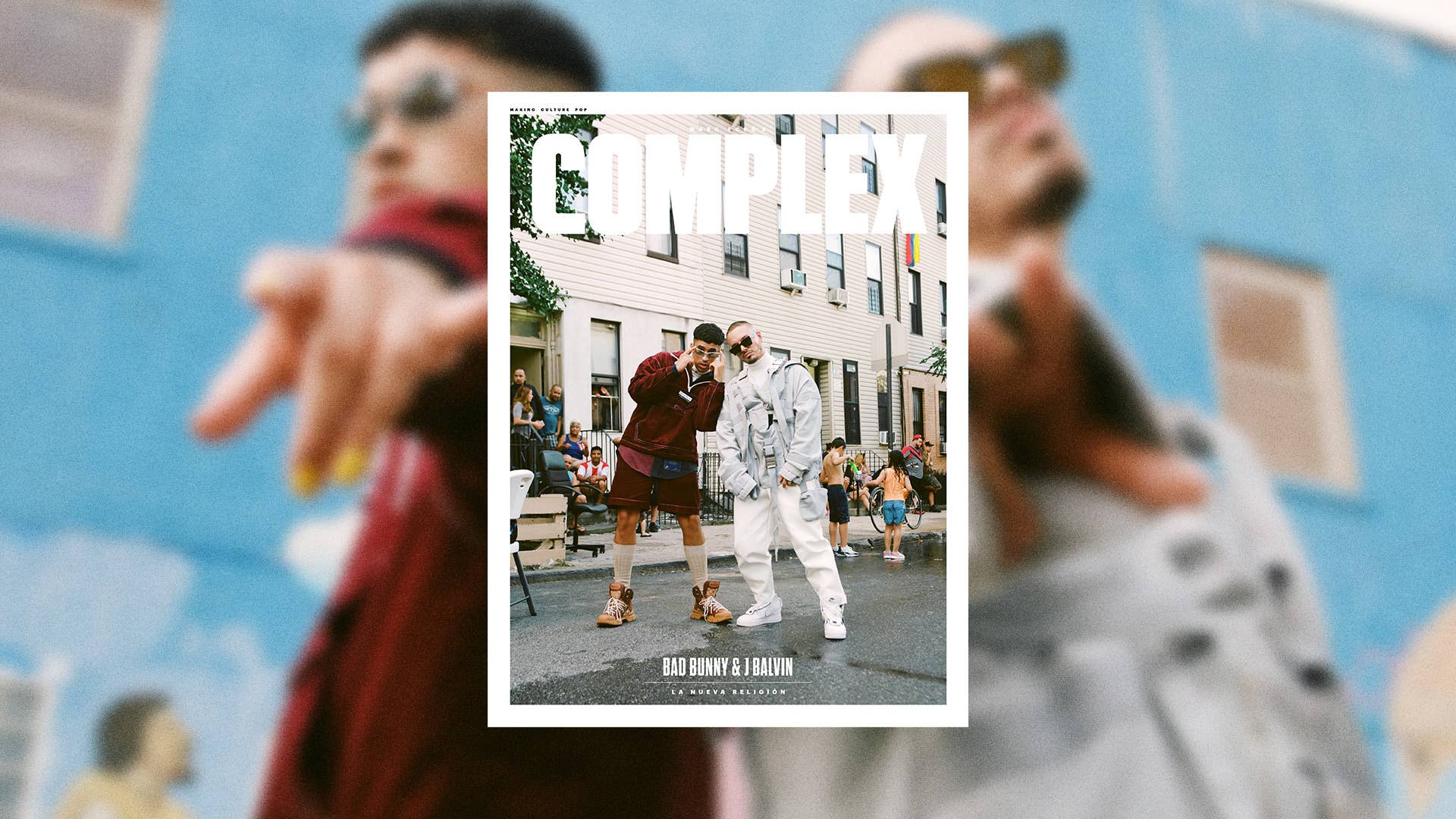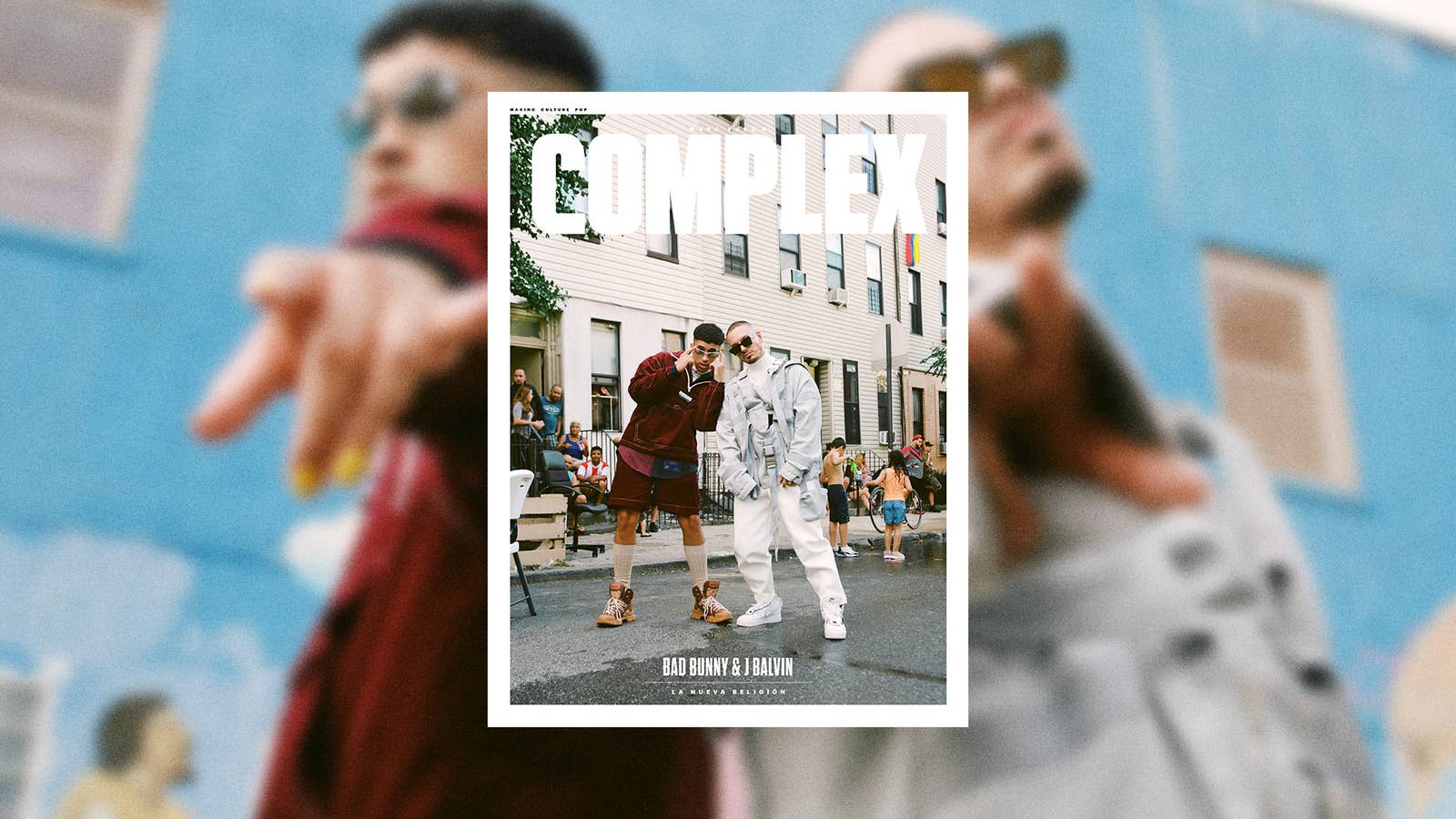
A mob of people swarm Bad Bunny, the Puerto Rican rapper, yelling his name. “Oh my god, he’s so sexy,” one teenage girl squeals. Another, in complete shock, shouts: “I touched him.” But Bunny isn’t fazed. Dressed in a maroon Alexander Wang anorak jacket with matching shorts, long tan socks, brown Gucci hiker boots, and mirrored sunglasses, with his fingernails painted yellow, he flashes a smile and takes selfies with them. In certain New York City neighborhoods, Bunny might not be as recognizable. Not here, though. Throughout the shoot for this cover, the predominantly Latino residents of the area surrounding Brooklyn’s Knickerbocker Avenue followed his and Colombian artist J Balvin’s every move. Some even managed to find the nondescript bar where we filmed, waiting outside for hours and screaming every time the door swung open. They wanted to catch a glimpse of Bunny, the 24-year-old Latin trap king, and Balvin, reggaeton’s answer to Drake.
Reggaeton’s long been a fixture in the Spanish-speaking world, but in 2004 it exploded in the U.S. with Daddy Yankee’s hit “Gasolina,” off his album Barrio Fino. The genre’s had its ebbs and flows since then, but it has recently found a massive new market, thanks in part to the global success of Luis Fonsi’s “Despacito” remix featuring Justin Bieber and Daddy Yankee—the most streamed song ever—and, of course, Balvin’s steady hit-making and Bunny’s arrival.
Last year, Balvin (real name José Álvaro Osorio Balvin) released his megasmash “Mi Gente” with French DJ and producer Willy William, followed by a remix featuring Beyoncé. Both songs were everywhere; the original currently has over 2 billion views on YouTube, while the remix has over 79 million. But those two songs weren’t just major successes on the charts. More than that, they helped other Latin rap artists, like Bunny, cross into the mainstream.
Born Benito Antonio Martínez Ocasio, Bunny started his career by uploading songs to SoundCloud while still a student at the University of Puerto Rico. But in two short years, he’s become a phenomenon. “Soy Peor,” the track that established the Latin trap sound, caught the ear of the U.S. audience; it’s been streamed 13 million times on SoundCloud. Balvin’s “Si Tú Novio Te Deja Sola”—a song Bunny first composed with the artist in mind—has been nominated for a Latin Grammy. He’s collaborated with big-name American artists like Nicki Minaj (“Krippy Kush”), Cardi B (“I Like It”), Chris Brown (“Dime”), and Drake on an unreleased song.
Together, Balvin and Bunny are leading the charge in bringing reggaeton to the American market once again. The best part about that is they’re doing it on their own terms—a new sound, painted fingernails, eccentric outfits. We haven’t seen anything like them before, but if you ask them, that’s the point.
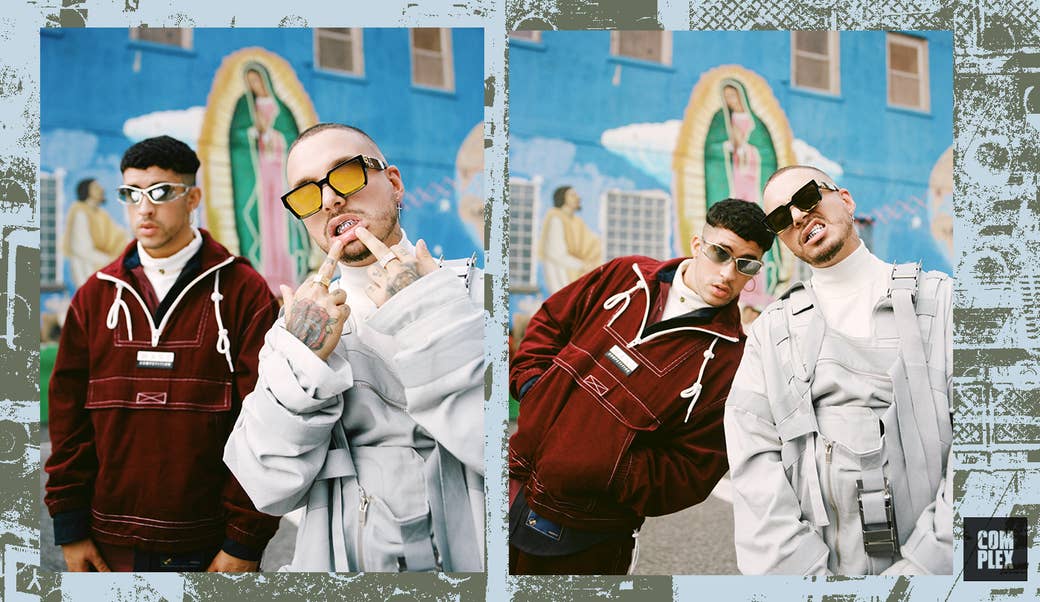
One of the best traits you both have is that you’re humble in spite of everything. How do you feel when you’re called an icon?
J Balvin: Wow, it’s a big responsibility. I have so many people that inspire me. I try to take the best from each of them and put it into practice. I feel like the more human, the more real [you seem], the more people are going to protect you and love you. The further away you make yourself seem, no one is going to be with you. They’re going to feel far away from you—distant.
Bad Bunny: I’m just processing it.
Do you need to have years of experience to be considered an icon?
Balvin: No. I feel that to be an icon—I don’t consider myself an icon, but…
Bunny: But the people do. That’s how it is. You may say you’re 20 things, and you may say, “I have the best this and I’m the best in that.” I never said that. I never said I was the best in anything. I never said I’m an icon. The world decides all of that. You can just be grateful, but as José said, it’s a big responsibility, and I’m still learning which [responsibilities] are mine. You just said that we’re two icons. You just asked that if experience is necessary [to be an icon]. I’m only two years into my career, and already you’re calling me an icon. Balvin has more than 10 years of experience. It doesn’t matter; it’s different. I think that once you get here, it’s already meant to be, and I think you carry it inside and that’s what creates you.
I think there are also certain traits you need to have to be an icon. You guys changed the mold of what it is to be a [Latin] rapper, in terms of style and fashion.
Balvin: I believe that. The market—the overall Latino market, not only the urban market—there have always been very few people that take risks and make statements. Because of this, those that do take risks are icons. For example, [Cuban singer] Celia Cruz.
Bunny: Of course.
"[Latin trap] is super necessary. It allowed the old school to be able to say, 'Okay, I have to leave my comfort zone and I'm going to get on this wave and reinvent myself.'" - J Balvin
Balvin: She is the clearest example of an actual icon. She was the one that put on 20 different wigs, but Selena wasn’t as much [of an icon]. Selena was a great leader, but like you said, [Celia] marked a generational change. The audience begins to love the person outside of the music. Already this person has arrived; already they’re loved. Even if they have four bad tracks, they’re still in the heart [of the fan].
Bunny: It’s also really important to recognize humility. I also think that it doesn’t matter how big you are or how people see you. Rather, it’s how you see yourself and how you show yourself in front of people, as a common and ordinary person who has simply been blessed.
Bad Bunny, when you started, people called you “Un raperito de SoundCloud,” someone who started out on SoundCloud. How did the SoundCloud platform help your career? And what were some of the songs that you put on there that are hits now?
Bunny: It 100 percent helped me get to where I am, because it allowed me to get to people and to where I am in the industry right now. I just uploaded music. That’s where everybody—producers like DJ Luian and Mambo King, and a fan base who I think up until today support me—discovered me.
Songs that I did at that time which are now hits? There’s “Diles,” which was obviously the first one that opened many doors for me. But then, after that, I continued making songs like “Tú No Metes Cabra,” “Tú No Vive Asi,” even the song Balvin and I made, ’’Si Tú Novio Te Deja Sola,” and many others, like “Soy Peor.” Almost all of my singles [were on SoundCloud first].
I was going to ask you that, whether you’ve thought about working on producing a song for J Balvin.
Bunny: I don’t know if he’d like to. If he’d give me the opportunity.
Balvin: [Laughs] Sure, obviously. Of course. I think that whenever there’s admiration and respect, the doors are open for everything, you know? For everything.
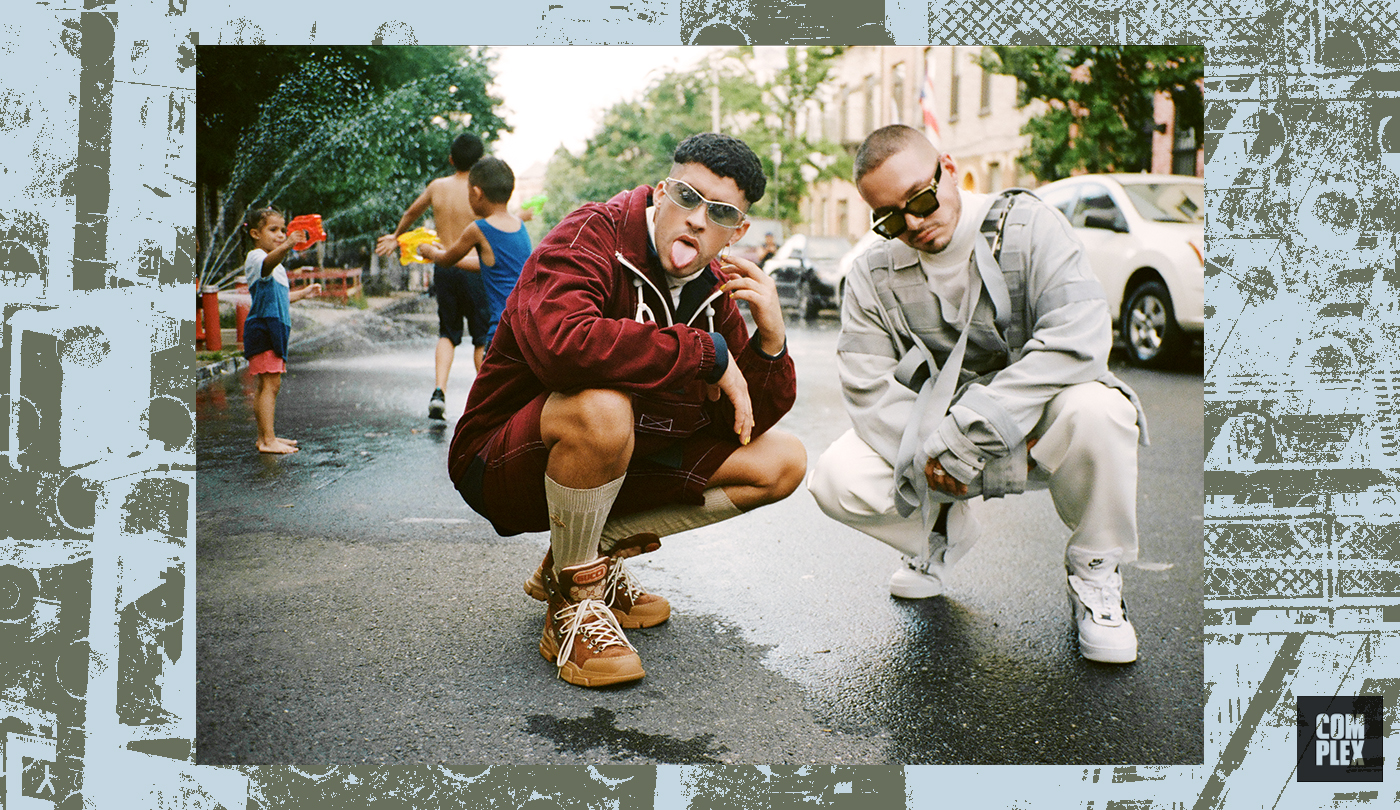
Tell me how you both met each other. Was there instant chemistry?
Both: Yes.
Balvin: At first, he was more timid. He’s still shy. Bad Bunny is shyer than people think, but when I met him, I met him at a concert I had [in Puerto Rico]. We ran into each other two times on the same balcony.
Bunny: I remember that I went to La Concha.
Balvin: Word. Exactly. When I go to Puerto Rico, I’m always with two or three buddies, with Guelo Star and with Luian.
Bunny: Exactly. I went with Luian.
Balvin: I went with Luian to the hotel, and Bunny was very quiet, shy, but Luian already knew how big he was going to be. I was just meeting up with Benito. But it was always really beautiful when I met him. He talked to me about how he loved “Snapchat,” a song of mine from the album Energía. He told me, “Damn, I love ‘Snapchat.’”
Bunny: Yeah, because that was one of the last albums—Balvin’s album Energía, and Drake’s Views—that I enjoyed before becoming famous, before Benito became Bad Bunny the artist. That summer, I really loved Energía, all of the songs on it, and Views.
Balvin: Luian told me, “He’s a fan,” and I was like, “Cool, but he doesn’t talk.” [Laughs]
Bunny: I made the track “Si Tú Novio Te Deja Sola” before I met Balvin. That was before these opportunities arrived in my life, when I did music without thinking if it would be a hit. When I made that rhythm, I only thought about [having] Balvin [on it]—like, “Damn, this song with Balvin would be super cool.” When I had the opportunity to make the song with Balvin, I showed it to him. I recorded the chorus, which I already had, and showed it to him. When he [said he] liked it, it was an incredible feeling. I always remember that. I’m not embarrassed to say it: I was so excited I had to go outside of the studio—I left Balvin and Mambo working—and cried.
“Si Tú Novio Te Deja Sola” went down in history. It’s the first [Latin] trap song to be nominated for a Latin Grammy.
Balvin: It was very beautiful because when they sent me the song, I said, “We have to record this now and make a video tomorrow.” And we did. It was immediate, and the vibes were there [Laughs].
Bunny: I felt the same way.
Balvin: I think that to do music with someone, it has to be beyond whether that person is trending. There has to be chemistry and respect. I record with people who people “don’t know” but that I admire and respect. I think all of that is in the vibes. Bad Bunny, at that moment, wasn’t Bad Bunny yet. But with that song, Bad Bunny arrived.
Bad Bunny: To me, the most important artists in my career are Arcángel and Balvin. Arcángel gave me the push, the respect in the streets.
With “Tú No Vive Así?”
Bad Bunny: Of course. He opened the doors for me. He put my shoes on so that I would run. Then J Balvin was the one who gave me that jump to another artistic and musical level. I always thank him.
Now we’re going to really talk about our music—reggaeton, trap, etc. If we compare the music from 13 years ago with today’s music, what would be the difference?
Bunny: There could be different opinions on this.
Balvin: What was happening then?
Daddy Yankee’s [album] Barrio Fino.
Bunny: Barrio Fino. Obviously it’s changed a lot, but if you’re asking me, I think that there was a little bit more creativity [back then]. I think that there are very few artists who are innovating and who are doing different things in the genre.
In these times?
Bunny: I think that there are many who are doing something different, but in the end it’s not actually that different. And it happens more in pop music, in what’s mainstream, in what’s playing on the radio. There’s a lot of music that… It seems as if they go to the studio, they have a pattern, and they throw out the same shit, the same tone, the same choruses. That’s why I’m still a fan of Balvin, because he’s one of the few who’s mainstream and pop that makes things that distinguish and separate himself from what others do, and that’s really important. Because of that, if you told me to choose, I’d pick the music from 13 years ago. If you ask me about music today, well, I’d choose a few artists and nothing else.
What’s your opinion, [Balvin]?
Balvin: The genre has already been around for years, so it’s easy for you to start to get monotonous. A wave comes and you ride that wave, or we ride the wave. But it’s better if we—[me and Bunny], Ozuna, Maluma, Daddy Yankee, Wisin y Yandel, everyone the public sees as being among the greatest within the genre, and I take myself out from here—as leaders reinvent ourselves every time we go out. I really like both generations. I always was a huge fan of Daddy Yankee, but when Benito came out I became [a] fan of him, too. I said, “Finally there’s another wild one. There’s someone that dares to innovate, to dress differently.” [Bunny] stands out immediately.
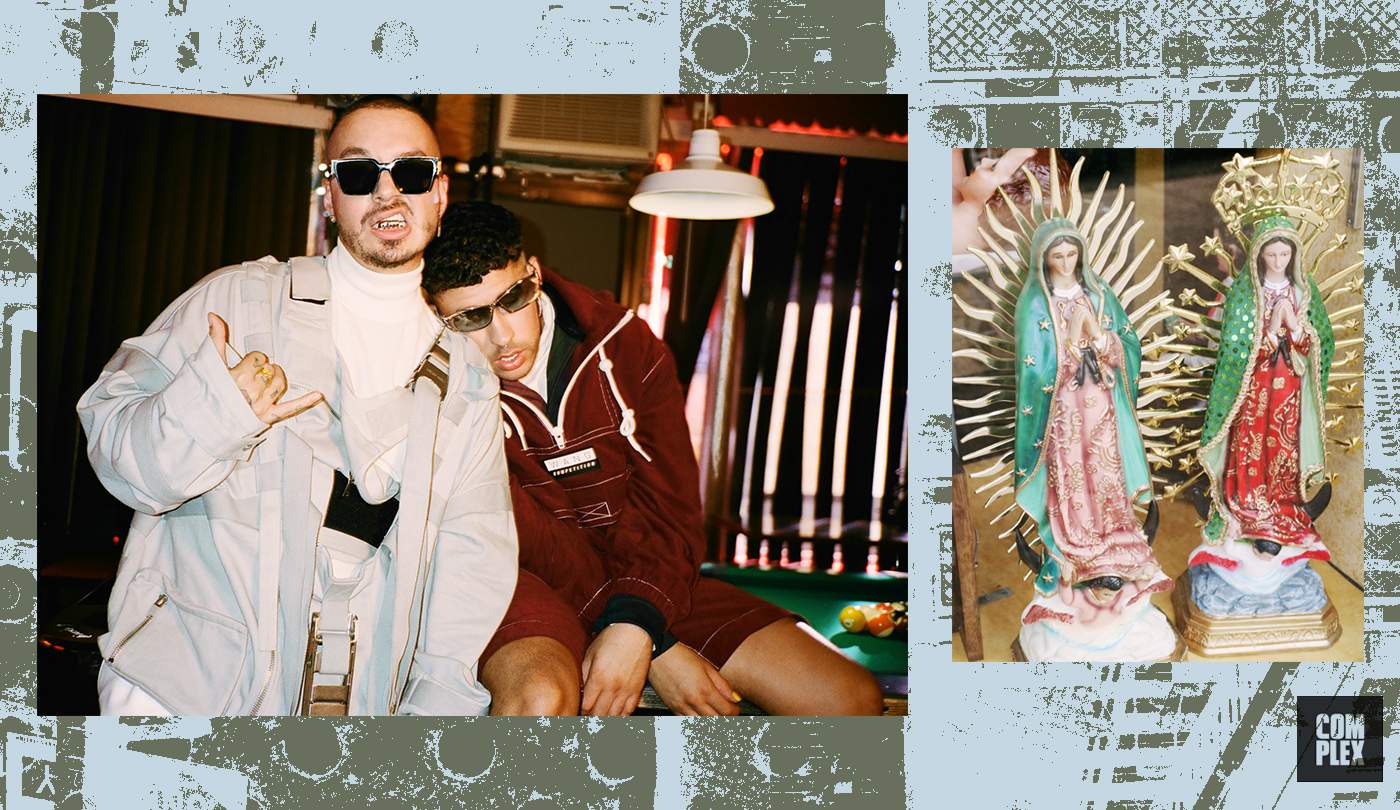
Do you feel that trap is the rebirth for the genre of Latin urban music?
Balvin: [Latin trap] is super necessary. I think it’s very important, and it will continue to be important. It allowed the old-school artists to be able to say, “Okay, I have to leave my comfort zone and I’m going to get on this wave and reinvent myself.” Some might not reinvent themselves, but others will.
Bunny: I think that it helped reggaeton itself because for reggaeton to be so big, and to be a Latin genre, they associate trap with reggaeton. It was also helpful in terms of providing a different sound so that people could start loving reggaeton again. They started to miss it. We had been listening to the same sound for a while, and then something new showed up and the impact was so strong it shook everything up. That’s why the “dancehall” songs are sticking, because people miss the pattern. All of it is reggaeton, it’s all the same shit.
Balvin: Everything is cyclical and goes back to its essence.
Bunny: To put it simply, we’re Caribbean, and the people missed that [sound].
Balvin: In my opinion, there are two great characters within the new school: Ozuna and Bad Bunny. They are always going to be compared [to each other] because they come from the same country. Ozuna was progressive. He was there making reggaeton until there was a moment when people were missing reggaeton. It’s the same thing that happened with trap.
Bunny: Ozuna is the one who fed this hunger for reggaeton the most.
Balvin: Exactly. Then came Bad Bunny, but he was like an elephant in a glass store. He arrived and knocked everything over.
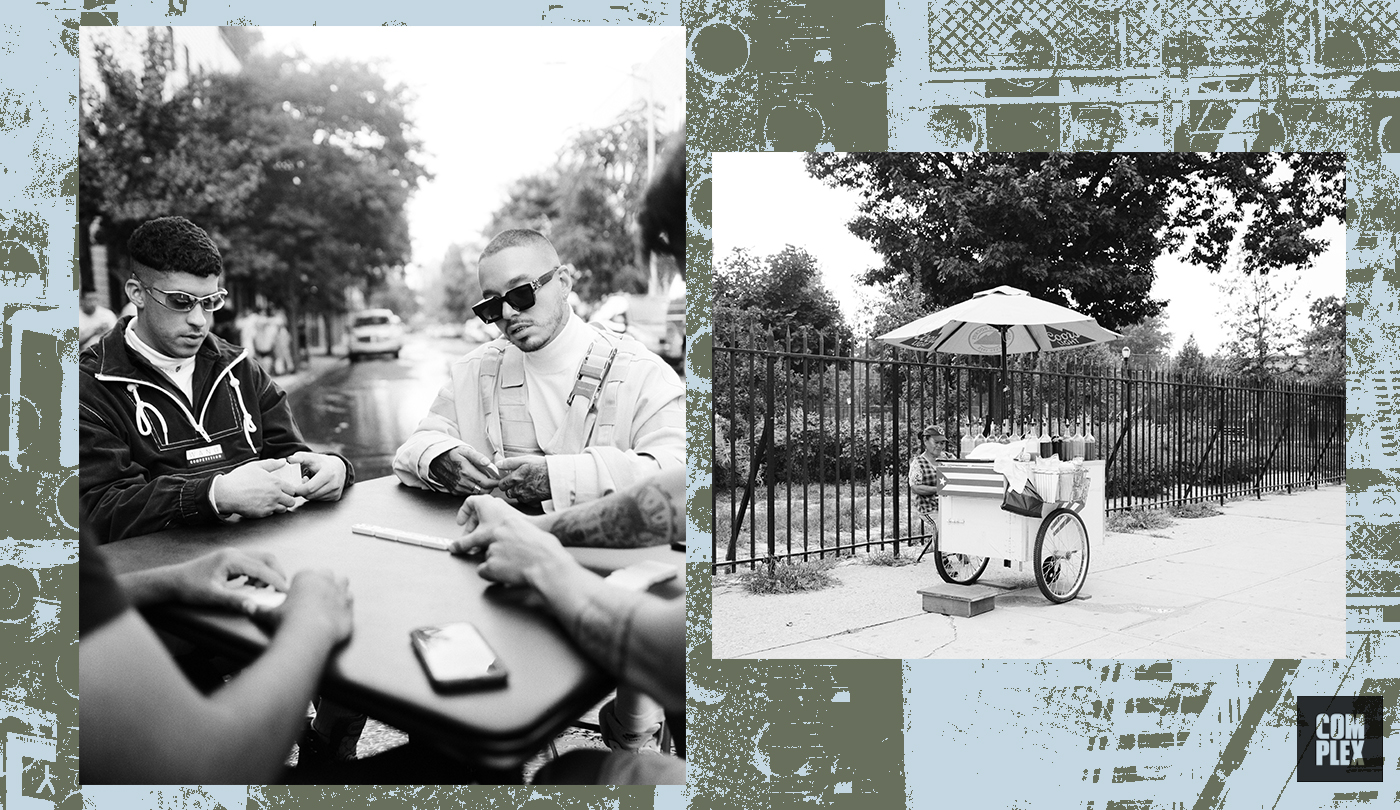
[Balvin], you were one of the ones who argued a lot in terms of the genre being called “urban” instead of reggaeton. Now that trap exists, and as Bad Bunny says…
Balvin: I always said that it should be called reggaeton. There was a time when reggaeton wouldn’t sell and everyone started calling it urban. And then a crazy Colombian appeared and came out with [“Ginza”] that says, “If you need reggaeton, here it is.“ And I wasn’t even from Puerto Rico, but being a fan myself, I saw the word reggaeton not being mentioned in Puerto Rico for a while.
Bunny: I remember when that song came out. I was in the studio creating a song called “Solo Avísame” for SoundCloud when that bomb came out. I remember everyone stopped in the studio to listen to the song and everyone was like, “What a hit.”Balvin: That’s what I mean—we have to leave the monotony.
Bad Bunny, you recorded with Drake. Chris Brown called you to dance onstage to “Krippy Kush” with him.
Bunny: Everyday people call me to record [Laughs].
But we’re talking about artists that you once looked up to.
Bunny: Yeah, but that’s already changed. Without sounding… I’ve already stopped getting surprised. In the beginning, yeah. But you can’t imagine how many huge artists call me all day, and there comes a moment where you have to say no. I admire you, I’m a fan, I know that you’re a legend, but I’d have to release a song daily [if I said yes to everyone].
Are you working on an album together? You had spoken with Ebro, and you even mentioned the name.
Bunny: Damn, Balvin already dropped the bomb.
Balvin: I didn’t drop anything.
"There was a little bit more creativity [back then]. There are very few artists [today] who are innovating and who are doing different things in the genre." - Bad Bunny
You said the name was Oasis? Why would it be called Oasis? An oasis of lyrics?
Balvin: What is an oasis for you?
I know that an oasis is made up of water.
Bunny: It means more than just water.An oasis of what? Friendship?
Balvin: No, no, no. Where are they? Where do they appear?
To freshen up?
Balvin: Okay, now you’re getting to the vibes.
Bunny: It’s a rescue, a relief, to freshen up. When you go to an oasis, you go there to supply yourself with the vital things you are missing, things that you need. That’s why it says water, because human beings can’t live without water.
What does an album mean for an artist?
Balvin: It depends if you’re thinking about business, or if you’re thinking about it as an artist.
No, forget about business.
Balvin: It’s being able to really transmit who you are and what you want to give, fuck the world.
Bunny: Without him saying that to me, I know, and that’s the only reason that I still haven’t come out with an album.
Because you want to do something that sticks.
Bunny: Because the day that I make an album, it’s to show who I am and what I can do. I’m not going to make a song just to make a song. The day that I make an album, it’s so that people really know what Bad Bunny’s about.

